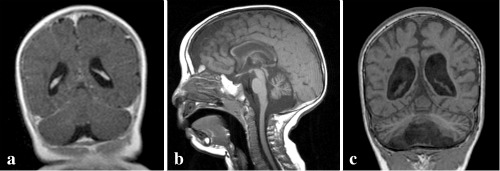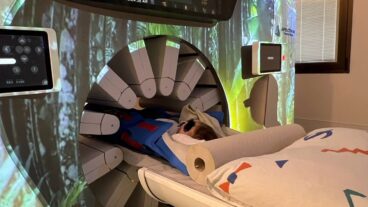Having identified the protein building block missing in patients with brain atrophy, Israeli researchers can now conceive of a way to replace it.

An Israeli scientist has identified a genetic mutation that leads to progressive brain atrophy. His research team has detected a defect in the 21st amino acid that results in a progressive disease of severe mental retardation and epilepsy that begins in infancy.
Prof. Ohad Birk, of the National Institute for Biotechnology in the Negev, who also heads the Genetics Institute at the Soroka Medical Center and The Morris Kahn Lab of Human Genetics, at Ben-Gurion University (BGU) of the Negev determined that the defect is associated with the production of the 21st amino acid, selenocysteine (SEC), which leads to progressive brain atrophy.
“The full name of the disease is Progressive Cerebro-Cerebellar Atrophy (PCCA), in which there is a genetically-determined, progressive wasting away of cells throughout the brain,” Birk tells ISRAEL21c, adding that “affected individuals have psychomotor retardation which is severe by one to two years of age, and spasticity (stiffness of the body, especially arms and legs). Most also have epilepsy.”
Prenatal screening may lead to prevention
According to Birk, “One out of every 40 Jews of both Moroccan and Iraqi ancestry may be carriers of this mutation, and it is estimated that in Israel there are about 200 cases of the disease. As the disease is both severe and common, testing for these mutations is expected to become a routine prenatal genetic screening test in these two populations, enabling prevention of future cases.”
Explaining the significance of his research results to couples at risk, Birk says that “if both parents are found to be carriers of a mutation in the gene, they are at 25 percent risk for the disease in each child. They can opt to be tested by chorionic villi sampling (CVS) as of week 10 of the pregnancy or by an amniotic fluid test as of week 16… Another option is to undergo in-vitro fertilization (IVF) with pre-implantation genetic diagnosis (PGD) at day one or two of the pregnancy, and implant in the mother’s womb an embryo that has been tested to be disease free… these options are offered to every couple at risk, and in Israel all the procedures are fully covered by the public health system.
“We assume that once the testing for mutations in this gene is implemented in genetics institutes throughout the world, many cases will be revealed in other countries,” he explains.
It is also believed that further research will identify these other mutations in the same gene as the cause of mental retardation with epilepsy in additional communities.
As the disease is progressive, elucidation of its molecular mechanisms may open new venues to treatment, preventing disease progression. Or in other words says the professor, “We have identified the amino acid (the protein building block) that is missing in these patients. One can think of conceiving ways to supply the missing building block.”
Defective amino acid leads to malfunction
The human genetic code, as deciphered some 50 years ago, encodes 20 amino acids which are the building blocks of all proteins in the human body. However, in recent years it became apparent that a 21st amino acid exists. Known as Selenium, it enters the body via food and is incorporated in human tissues into what is known as selenocysteine.

This 21st amino acid is unique in that it is encoded by what is normally a stop codon – that is, a DNA sequence that normally instructs the protein-building system to end the chain of amino acids, terminating the generated protein. In contrast with most genes, some 25 genes have a unique component that manipulates the stop codon so that instead of terminating the evolving protein chain, it inserts an SEC building block at that point.
“SEC is an amino acid that is a building block which is essential in the formation of some 25 proteins in our bodies, many of which are essential for normal brain function,” Birk tells ISRAEL21c. “The mutation in the affected individuals prevents the formation of SEC. In the absence of SEC, the 25 proteins do not form normally, leading to severe malfunction of the brain.”
The research was conducted by Birk, his Ph.D. student Orly Agamy, and Drs. Bruria Ben Zeev, Tally Sagie, Dorit Lev and Dieter Soll. It was funded by the Morris Kahn Family Fund, the Legacy Heritage Fund and the Israel Science Foundation and published recently in the American Journal of Human Genetics.
A little research about the researcher reveals that this most serious scientist is also blessed with a sense of humor. A click on a myspace page in his name leads to an intriguing blog entry that begins thus: “Minimal bio: Born, raised and will die. Detailed bio: Born, raised, played piano, wrote music. Fell in love, made love, had kids. Loves wife, loves kids. Seeing patients. Doing research. Teaching students. Helping some. Discovering some. Entertaining some. Music: Writing music and texts, playing piano/keyboard + musical arrangements.”












